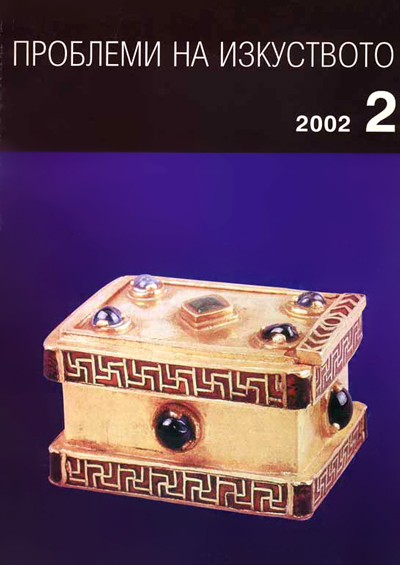
We kindly inform you that, as long as the subject affiliation of our 300.000+ articles is in progress, you might get unsufficient or no results on your third level or second level search. In this case, please broaden your search criteria.

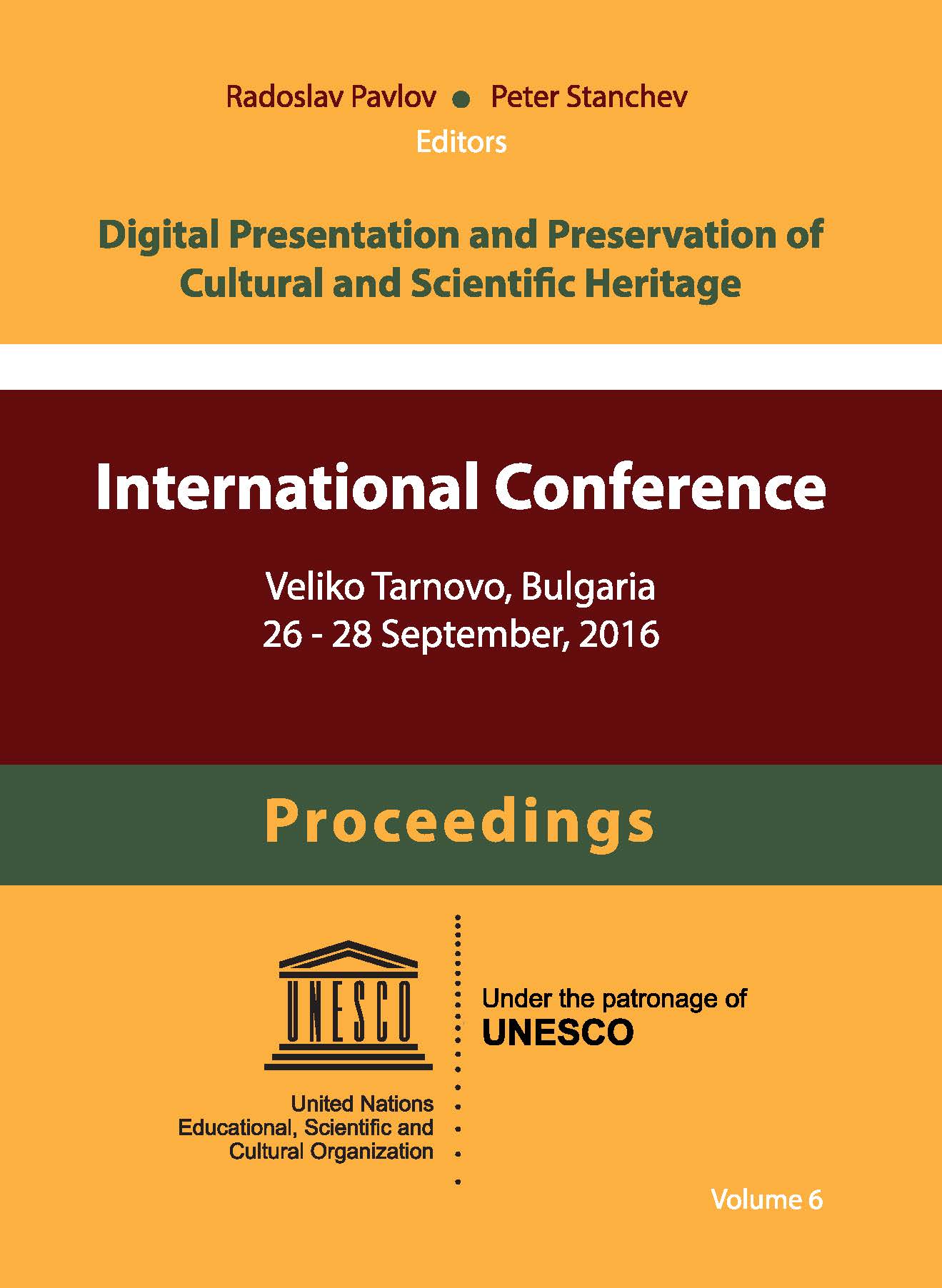
The study is devoted to the conscription during socialism in Bulgaria and presents the digitization of materials and the researches for the conscription and the ideas for creating a digital archive of soldiers' legacy of the socialist period.
More...
Seen in its historical evolution, lexical innovation throughout the literary text illustrates through numerous acts of language efforts to enrich our modern culture with new lexical expressive elements. The ideas, imagination games has promotes terms and new words associations, proving, in this way, multiple possibilities to combine metaphoric words available in language. Understanding criterion without effort and the novelty must be accepted as a fundamental rule in the literary text, and due to the fact that science and literary art are to meet in unusual associations,constitute a basis and an incentive, at the same time, in the development and modernization of Romanian literary language
More...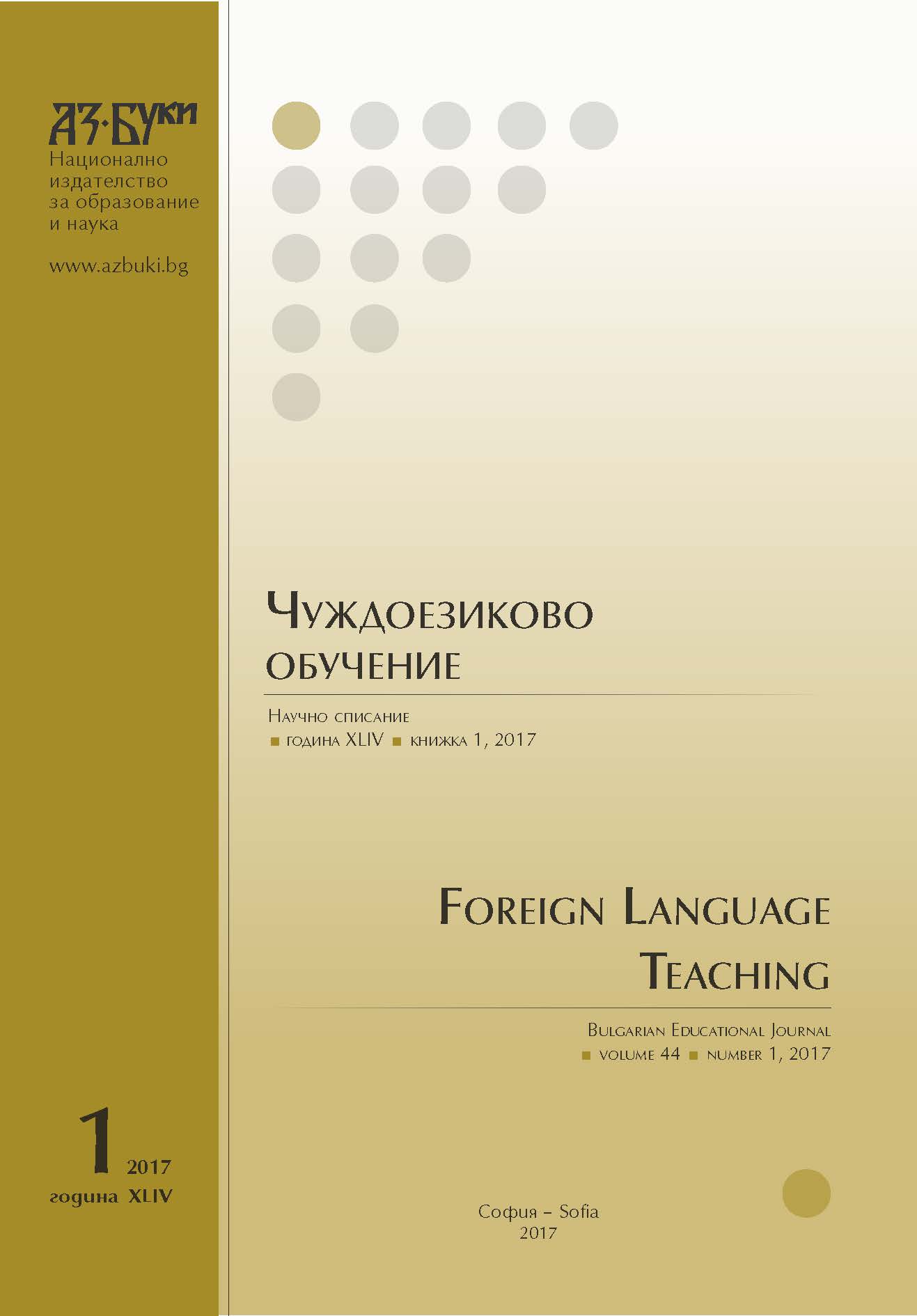
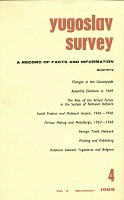
After several years of stagnation (1956—1960), an upward trend started in publishing in 1961 and continued through the period 1963—1968, marked, however, by certain fluctuations1. The total annual number of titles rose from 6,400 in 1963 to 9,600 in 1968, or by 50 per cent, and the total annual number of copies from 45.7 to 67.7 million copies. In total annual number of titles published Yugoslavia compares well with other relatively developed European countries. It should be noted, however, that the multinational and multilingual composition of the Yugoslav community entails duplication of editions of individual works, so that the same title is registered in each language and in each script in which it is published, even when put out by the same publisher and in the same production.
More...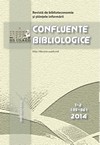
The article is about the activity of Balti University Library in 2013 and provides with some background information about collections development to management activities, marketing and Informatization. This year is signifcant for donations and sponsorships to ensure informational resources with printed study processes and scientifc research, enhancing the information flow through the enrichment of OPAC and institutional electronic archive(ORA USARB), diversifcation of electronic services and conduct surveys to highlight the needs of users, ensuring participatory management through the creation of 14 profle groups for the purpose of monitoring key-processes of the library. The planned works was attended by 52 employees, 49 being librarians, respectively, 83% are highly-skilled degree holders and other of one and two degrees of skill
More...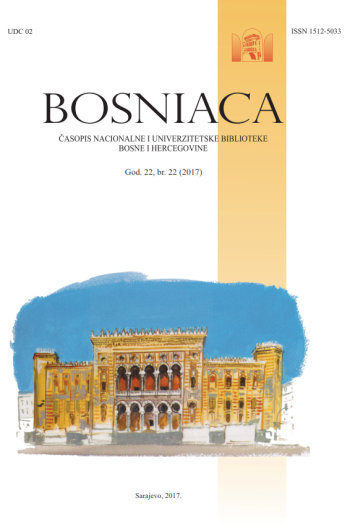
Bosnia and Herzegovina is rich with cultural heritage. In this paper, one of the methods of preserving the cultural heritage is presented. That is the process of digitalization. The case study was Roman villa in Ilidža near Sarajevo. The similar project with a slightly different representation of same object is also presented.
More...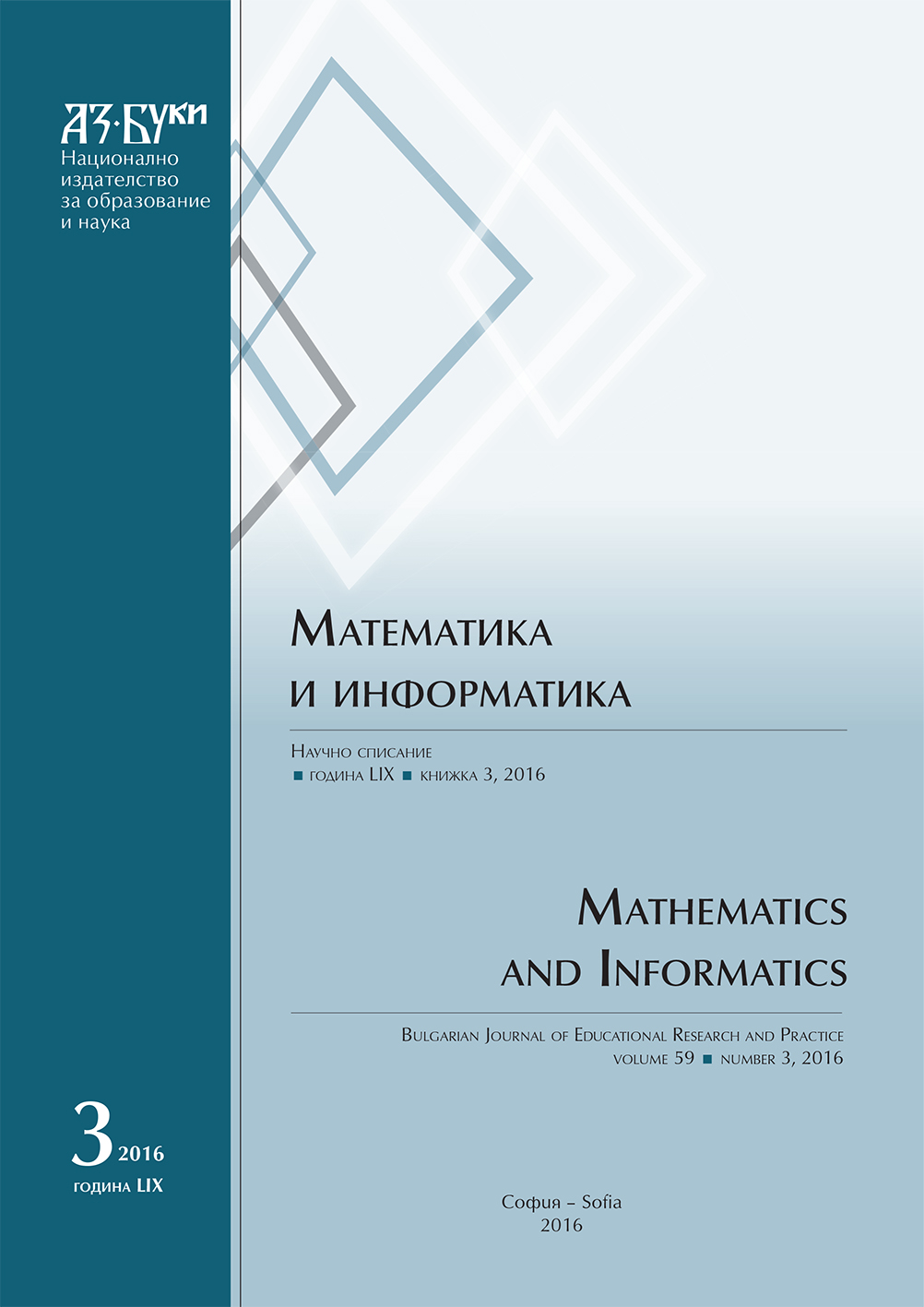
The need for highly qualified specialists in the field of Information and Communication technologies is growing every year. Recognizing this trend, the Ministry of Education and Science has taken measures to boost higher education institutions that have the capacity to increase the intake of students in the professional direction 4.6 Informatics and Computer Science, as well as in the direction 4.5 Mathematics. Mathematics and computer science are disciplines that hamper the majority of students and it is essential that the teacher can stimulate motivation for learning.The article describes the experience of the author in training prospective students to prepare for the Informatics entrance exam in Plovdiv University. Approaches to increase motivation as education through entertainment (edutainment) and gamification give good results. A method is proposed for solving problems of entrance exam and an exemplified solutions to a concrete task is described.
More...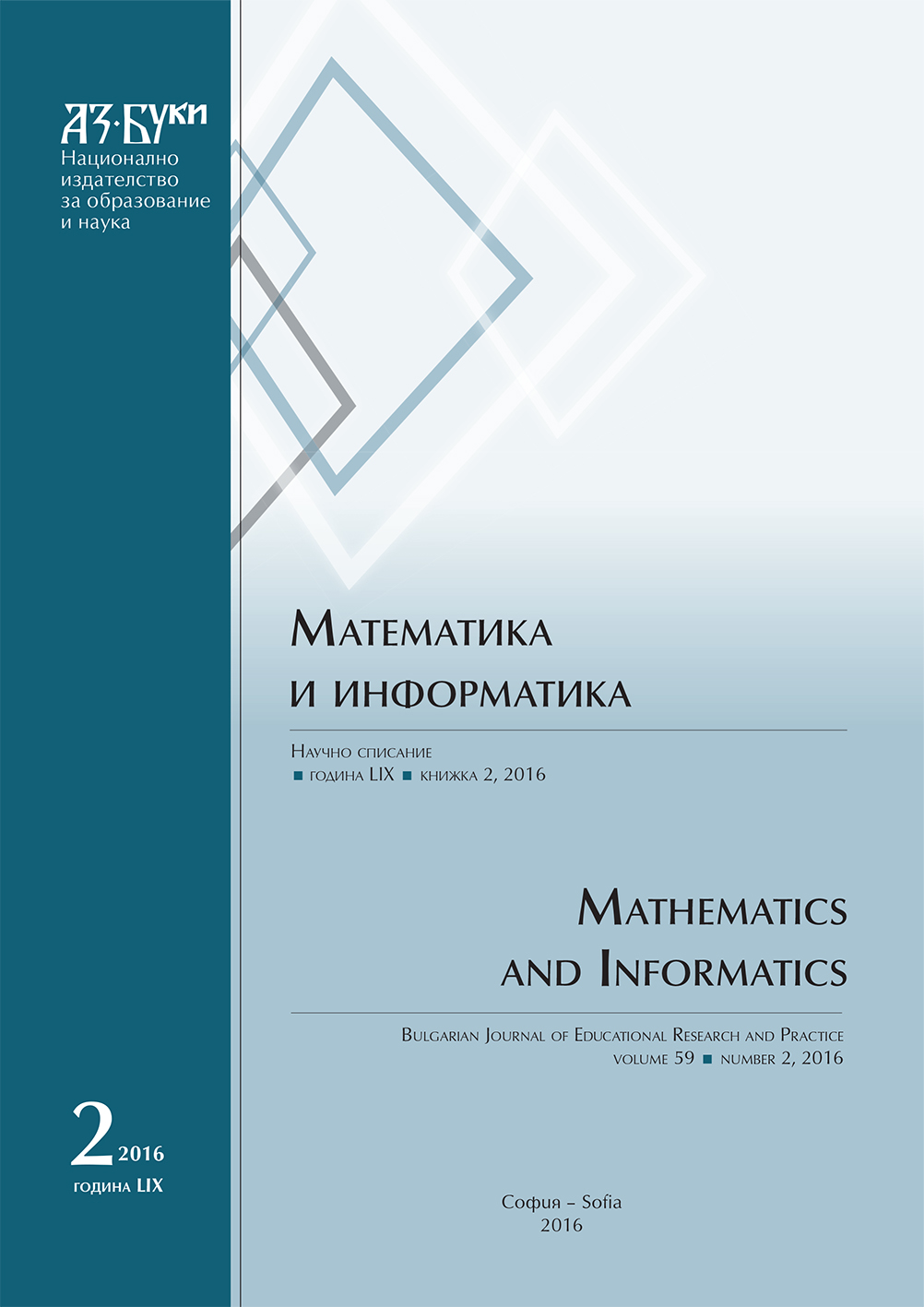
The paper presents the idea of parallel formation of skills for didactic design in electronic and traditional form. A conceptual model is proposed to realize this idea in a methodological course for future teachers. Some concrete examples of platforms are shown to describe teaching scenarios and software to create didactic materials for mathematical teaching, which can be used in applying the described model.
More...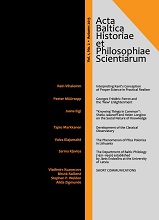
Bibliographic control has been accepted for centuries among librarians, though nowadays it is spreading rather rapidly to other fields of knowledge. The new technologies offer us not only open access to information, but also the possibility of becoming drowned in it. Over the years, document-archiving strategy, along with development of bibliography, have been widely discussed within the International Union of History and Philosophy of Science and Technology / Division of History of Science and Technology (IUHPST/DHST). In 1993, two separate DHST commissions (Bibliography and Documentation) joined to create a Commission for Bibliography and Documentation (CBD). The first professional event sponsored by the CBD was a workshop on bibliography and documentation in 1995 in Liege. From that time on, the CBD adopted the goal of making bibliographic data more widely available in electronic form (Home, 1996, p. 309).
More...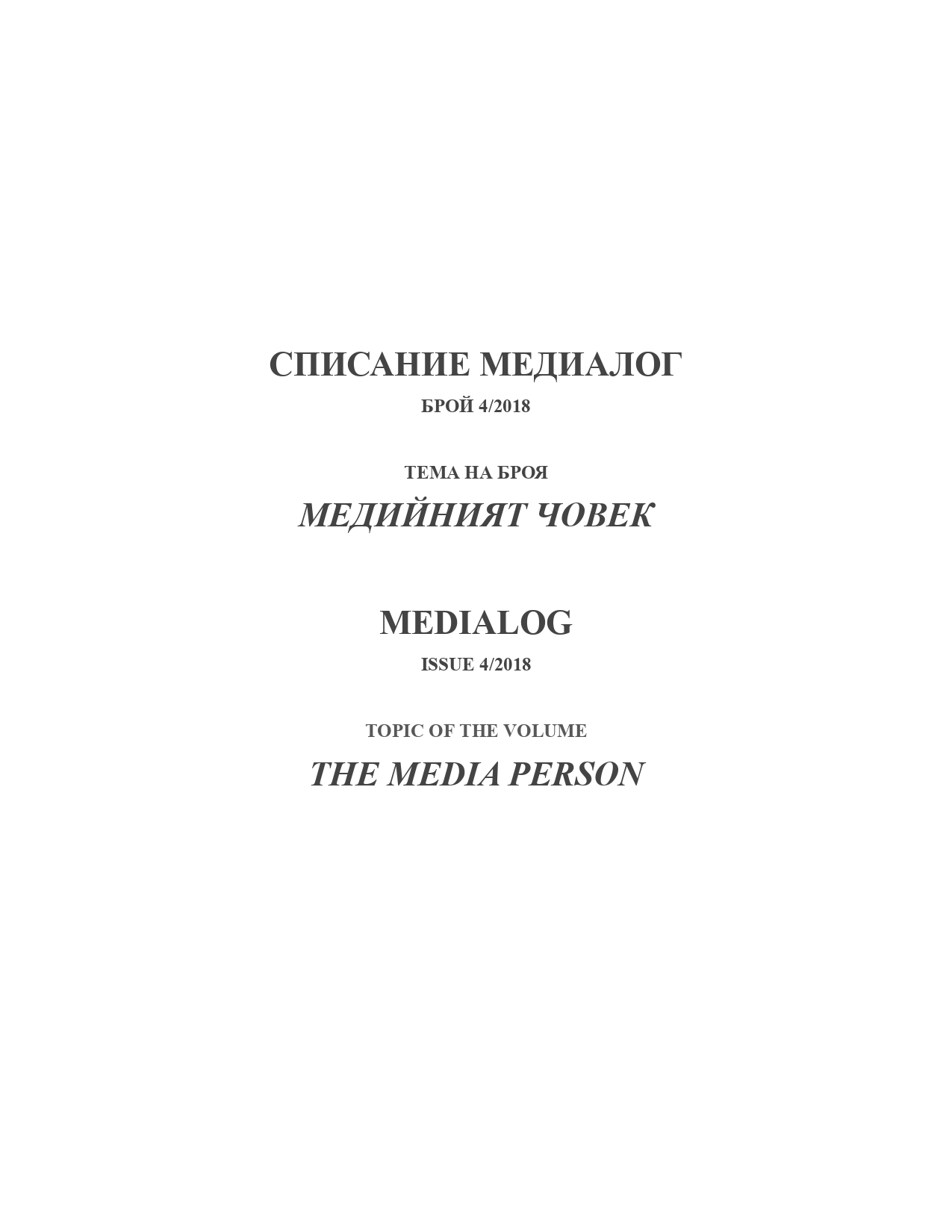
Object of examination in the article is the specificity and activities of Bulgarian book publishing and Bulgarian literature in 2017. The purpose of the survey is to follow the trends in the Bulgarian book publishing and to investigate which are the best selling Bulgarian books during this period of time. In order to achieve this, I am going to analyze the rating of bestseller books of the biggest book store in my country – “Heliкon” and also the rating of one of the most developed Bulgarian publishing houses – “Hermes”. The main task of the research is to investigate the data from these book ratings and to examine which bestseller books in 2017 are representatives of the contemporary Bulgarian literature. In this way we can have better understanding about the specificity and the trends in the modern Bulgarian book publishing and we can examine which books provoke biggest interest in the audience.
More...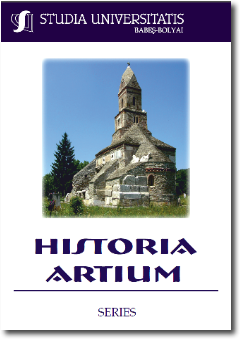
Basic Geometric Forms and Primary Colors Associations, from Wassily Kandinsky to Ingo Glass. An inventory of theoretical interpretations, from Wassily Kandinsky to Ingo Glass, was sought and explanations were sought for these interpretations and associations. With the arrival of Wassily Kandinsky at Bauhaus, the theory of the relation between the geometric forms and the primary colors emerged, whereby the yellow color is associated with the geometric shape of the triangle, the blue with the circle, and the red with the square. A test applied to students around 1923 supported this association that influenced the artistic theory of the 20th century. In search of a synthesizer concept, Ingo Glass reinterprets the Bauhaus theory in the nineth decade of the 20th century. In the Ingo Glass artist's view, the yellow color is associated with the triangle, blue is a color that receives expressivity in particular by associating itself with the balanced shape of the square, and red is predominantly related to the expansionist dynamics of the disc or circle. Through this reinterpretation, the artist simplifies the shapes of the sculptural constructions at the triangle, square and circle, and from the chromatic point of view he limits himself to the use of primary colors. The comparison between the two theories made by Peter Volkvein, the director of Ingolstadt's Concrete Art Museum, in 1998 stated the need to determine who is right! The history of the arts was thus given a theme by which to articulate the artistic axiom of the relationship between basic forms and colors. The analysis of this issue has not been transformed into a partisan for one or the other of the two theories because we consider the differences between the two interpretations as the consequence of a socio-cultural evolution and the imprint of the environment in which we have formed our artistic sensitivity. The understanding of Kandinsky's theory and then the acquisition of this point of view within the Bauhaus School is outlined in the cultural context of the early 20th century. The test given to students at Bauhaus revealed a perfectly justified viewpoint and consequently was embraced by the members of the school and the artistic world that followed this experiment. A century away, Ingo Glass changed the interpretation as a result of adapting to a more abstract cultural environment. The reasoning of combining blue with rounded shapes that are specific to the depth of the water and thus to the relationship with centripetal space specific to the circle is close to individuals who lived in a more natural environment at the beginning of the 20th century. The reasoning of square association, as a balanced geometric shape with a static color (in a stable sense), is close to individuals living in a more abstract, more common notion at the end of the 20th century.We therefore consider that these differences of perception are due to the dynamics of perception of the contemporary man. Changing the socio-cultural environment also causes changes in how to perceive the relationship of forms and color, between natural and abstract. To test these issues, a test close to that offered at the Bauhaus School was designed and respondents were the students participating in the National Olympiad of Visual Arts, Architecture and Arts History. So the test has national coverage, but it has been limited to students aged 16-19, qualified at the 2018 National Olympiad, organized in Bistrita. The results were compared with those obtained about ten years ago at the Museum of Modern Art in New York, which showed that 48% of the respondents chose the blue color combination with the rigorous form of the square. The test from Bistrita confirmed an association of the yellow-colored triangle in the proportion of 39%, 36% red, and 24% blue. The circle was associated 39% with red, 37% with yellow and 23% with blue. The square met a majority of 52% for blue, 25% for red and only 22% for yellow. The experiment itself reproblematizes the relationship between the intuitive and rational approach of the contemporary plastic phenomenon.
More...
Sulla giuria, a un progetto d’arti plastiche nell’anno 2018. Non mi sembra un falso problema, dopo cinquant’anni di sorveglianza e ripresa di quello che esce dal Vaso di Pandora, servendo alla rappresentazione di un programma ideologico, dittatoriale, il problema della scelta di un lavoro d’arte, creato liberamente, senza barriere e con la speranza che porta un messaggio valoroso, quale rimarra per il futuro. Il modo in cui lo facciamo oggi, vuole esprimere anch’esso la separazione da questo passato recente, malefico, sottoposto a una propaganda per un sistema che si è dimostrato utopico, e quale vogliamo, o non vogliamo, ha lasciato tracce profonde. Non basta dire che vogliamo essere differenti, e con questo pensiero tutto si risolve. Nell’arte rispettare il gusto della maggioranza diventa spesso dannoso, esprime l’apprezzamento della mediocrità in nome della quale, la storia ce lo dimostra, si sono sacrificati tante idee che sono sparite, o sono stati obbligati di aspettare decenni o secoli. Ci proponiamo alla giuria di nuove creazioni, e vogliamo dare soddisfazione a una maggioranza mediocre, dominante, o desideriamo un’apertura quale porti verso il futuro, che ci offre qualcosa che noi i molti non possiamo vedere oggi ma aspettiamo di darci gioia domani? Il comunismo non ha permesso nemmeno la propagazione nella grande massa di alcuni successi quali l’intero mondo ha riconosciuto allo spirito uscito dallo spazio romeno (vedi il caso di Constantin Brâncuși. La scultura „La saggezza della terra” non ha avuto ecco a un intero popolo quale, oggi, non ha riuscito di raccogliere nemmeno un euro/rumeno per godere noi e i nostri successori di un opera quale nel mondo occidentale vale decine di milioni di euro). Per non allungarci troppo, desideriamo un nuovo approccio verso il rifacimento della vera scala valorica, dopo più di mezzo secolo in cui le giurie erano supervisionati totalmente dal Comitato di Cultura ed Educazione Socialista - il braccio decisionale del Partito Comunista Romeno, sezione locale oppure nazionale.
More...
Una telefonata del professor Pasquale Fornaro mi ha annunciato la triste notizia della scomparsa del giovane professor Andrea Ragusa, nostro amato collaboratore. L’ho conosciuto nel 2013 come ospite del nostro Istituto, all'Università Babeș-Bolyai di Cluj-Napoca, con una conferenza ed un seminario, entusiasti davanti ai nostri studenti. Il nostro dialogo ha continuato nello stesso anno, a poco tempo, in occasione della mia conferenza all'Università di Siena, ambedue essendo preoccupati del problema del patrimonio (vedi l'Annuario dell'Istituto di Studi Italo-Rumeni, X, Cluj-Napoca Roma 2013-l'articolo, La gestione del patrimonio culturale ed ambientale tra centro e periferia: l'esperienza regionale. - vedi anche le locandine.
More...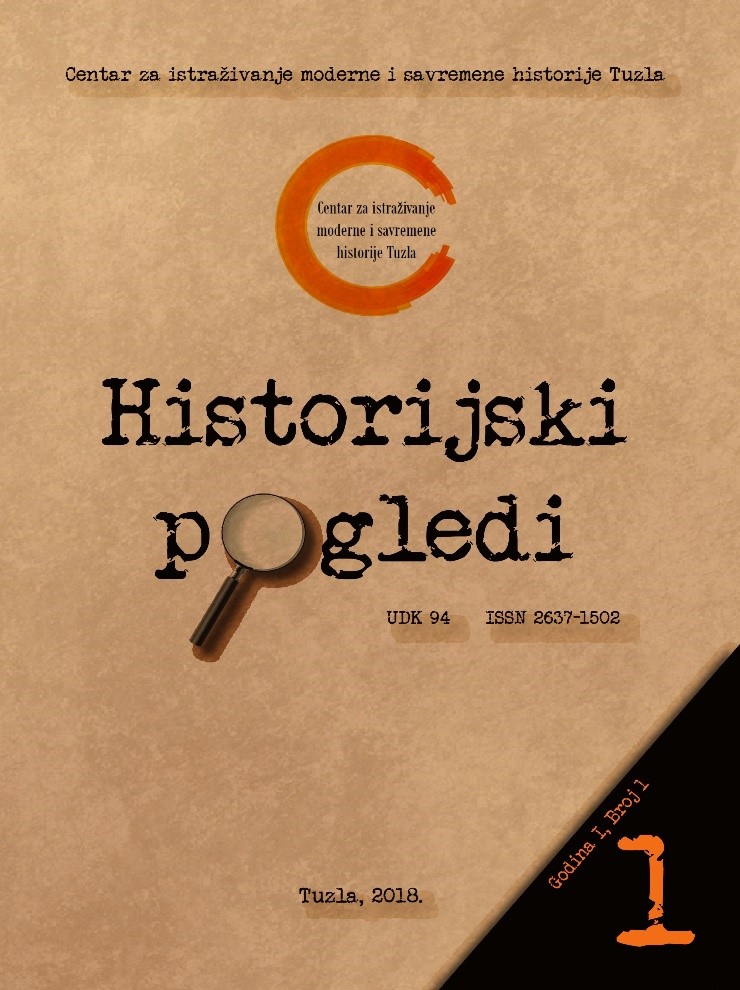
Cultural policy in Bosnia and Herzegovina after the Second World War was aimed at strengthening the network of cultural, scientific and other institutions. Libraries had an important place within institutions. The new government helped build libraries and provided them with material resources. A large number of professional and special libraries of different rank and significance have been established. By establishing libraries after the Second World War, efforts were made to encourage the interest of the population in the book, and this was achieved by using various ways of agitating and popularizing libraries. Libraries began to be established in all places in northeastern Bosnia where conditions existed. Opening of city, town and local public libraries. Libraries and reading rooms were closely linked to the literacy of the population. As one of the more active forms of enlightenment, the advantage was that they were accessible to the broadest masses, they did not cost much and could easily be organized and maintained. The work on the opening and renovation of libraries and reading rooms was particularly intense in the aftermath of the Second World War. At that time, libraries were established in all major administrative centers, thus establishing a network of libraries in northeastern Bosnia. On the establishment of libraries in northeastern Bosnia after the Second World War, with the emphasis on the establishment and operation of the National Library in Tuzla, and with which problems and shortcomings they encountered, will be discussed in this paper.
More...
I.N. Kibardin, the representative of the Vyatka region district intelligentsia, achieved significant success in the entrepreneurial activity during the establishment of capitalism in the Russian province. His numerous commercial projects – library, printing office, bookshop, and newspaper publishing – in Yelabuga, the city of a district status in the Viatka governorate – were interrelated. Each separate initiative contributed to the capitalization of his printing business. In this industry, I.N. Kibardin was a nontrivial example: the simple typographical production of the Vyatka province became a company capable of producing nationwide publications that took a leading position in the governorate. The experience of I.N. Kibardin is of interest for studying capitalism formation at the local level of the Russian province in the late 19th – early 20th centuries. The maximum development of the market opportunities of the Russian hinterlands by the entrepreneur was achieved under the state policy of restrictions and emerging demands of the society for the product he offered. He proved the efficiency of the mechanisms of bourgeois development at the local level. From the point of view of historical personology, the unique path of the “little man” who advanced by himself to prominent positions in the business community of the region is of particular interest. The relevance of the research lies in the anthropological approach to the study of the history of Russian entrepreneurial activity during the late 19th – early 20th centuries, in focusing on the background historical figure who was devoid of the halo of uniqueness and elitism.
More...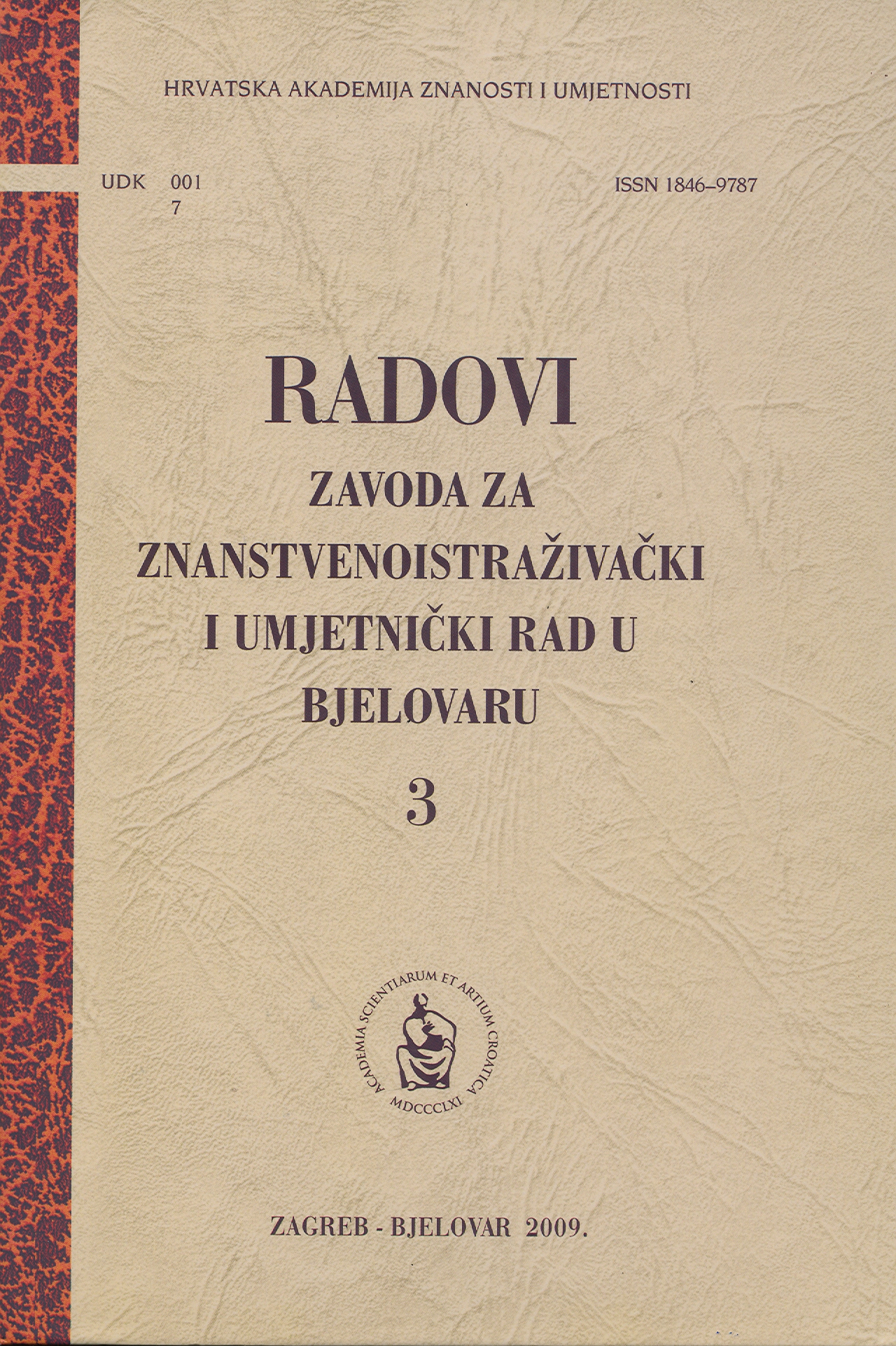
This paper rests upon an empirical research of national libraries in the Bjelovar-Bilogora County, as a support to its development seen through the prism of both formal (university) and informal education (life-long learning). Following the introduction, presented in numbers are the following: student membership per library; volumes of technical books, with the emphasis on books in economy, marketing, management, engineering, techniques, technology, computer science and medicine; technical journals in the above mentioned fields; databases and other electronic sources. The acquisition of technical/scientific library materials and the funds for the acquisition are analysed. The second part of the paper is dedicated to the premises, the level of their equipment, and the competences of librarians as mediators in realising the approach to knowledge. In the third part of the paper, the role of libraries in realising the life-long learning programmes is presented and explained.
More...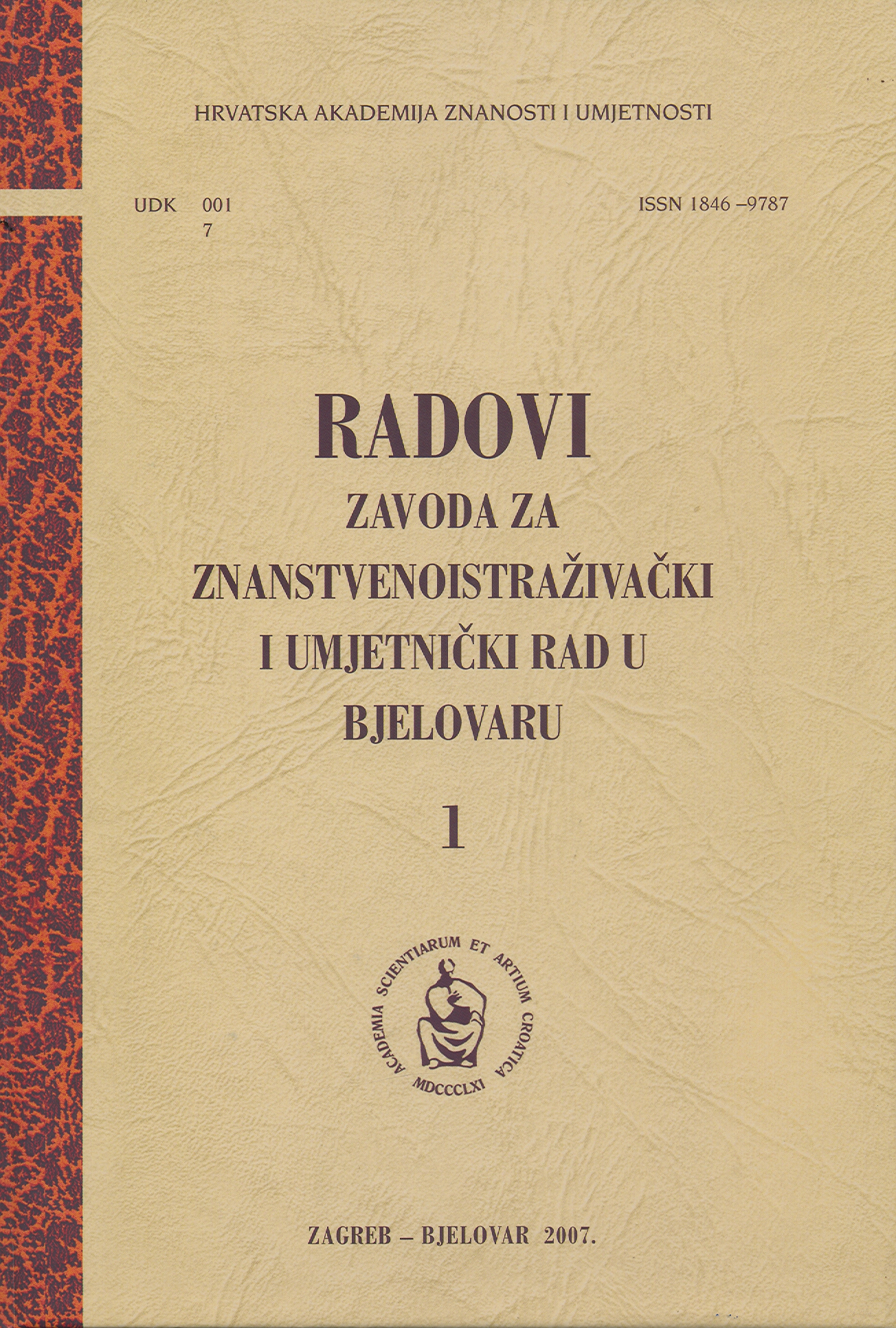
Bjelovar’s libraries and reading rooms in the beginning of the 20th century were of particularly notable social and cultural significance. At that time there were large changes in librarianship that were connected with the so called Public Libraries Movement. The work of the libraries that functioned in the 19th century continued and their task was expanded. Apart from the promotion of national, patriotic ideas and Croatian literature, libraries are engaged in the education of the wider classes of society. This is manifested in the work of the oldest and the most significant reading room that developed from the officer’s casino. The Reading Room changed its name in 1906 to the Croatian Reading Room. In the same year due to social and political circumstances of that period, the Serbian Reading Room separated from the main reading room and began with its own work. There is also a Library of Jewish Civil Society. The foundation of public libraries in Bjelovar such as the Croatian Public Library and the Croatian Public Library “Preradović” was an enormous effort. It was backed by branches of the Croatian Society for Public Education, students and academically educated citizens associated in “The Croat”Academic Ferial Club. Public libraries interceded for the cultural transformation of people, and the forms of their activities were literacy courses, lectures, amusement evenings, and private and general problem discussions. In particular the function of public libraries was their cooperation with schools and similar institutions. They included the countryside population, and their members collected books by themselves (gifts, donations or other libraries stocks – duplicates). Bjelovar’s press was directly involved in the foundation of public libraries and the functioning of the other libraries and reading rooms. That is why in Bjelovar’s periodicals (Independence, Bjelovarsko-Križevački Weekly) of this time, there were regular noted openings of new libraries and articles of their importance were being published, and the editorship was involved in the activities of book collecting and admittance of new members. Bjelovar’s libraries created under the influence of the public library movement had been functioning for a short time but their influence is significant for the entire Bjelovar librarianship and for the functioning of the library of Croatian Educational Craftsmen and Workers’ Society Golub. In the future, this library will support the education of the worker, craftsmen and merchant classes in Bjelovar.
More...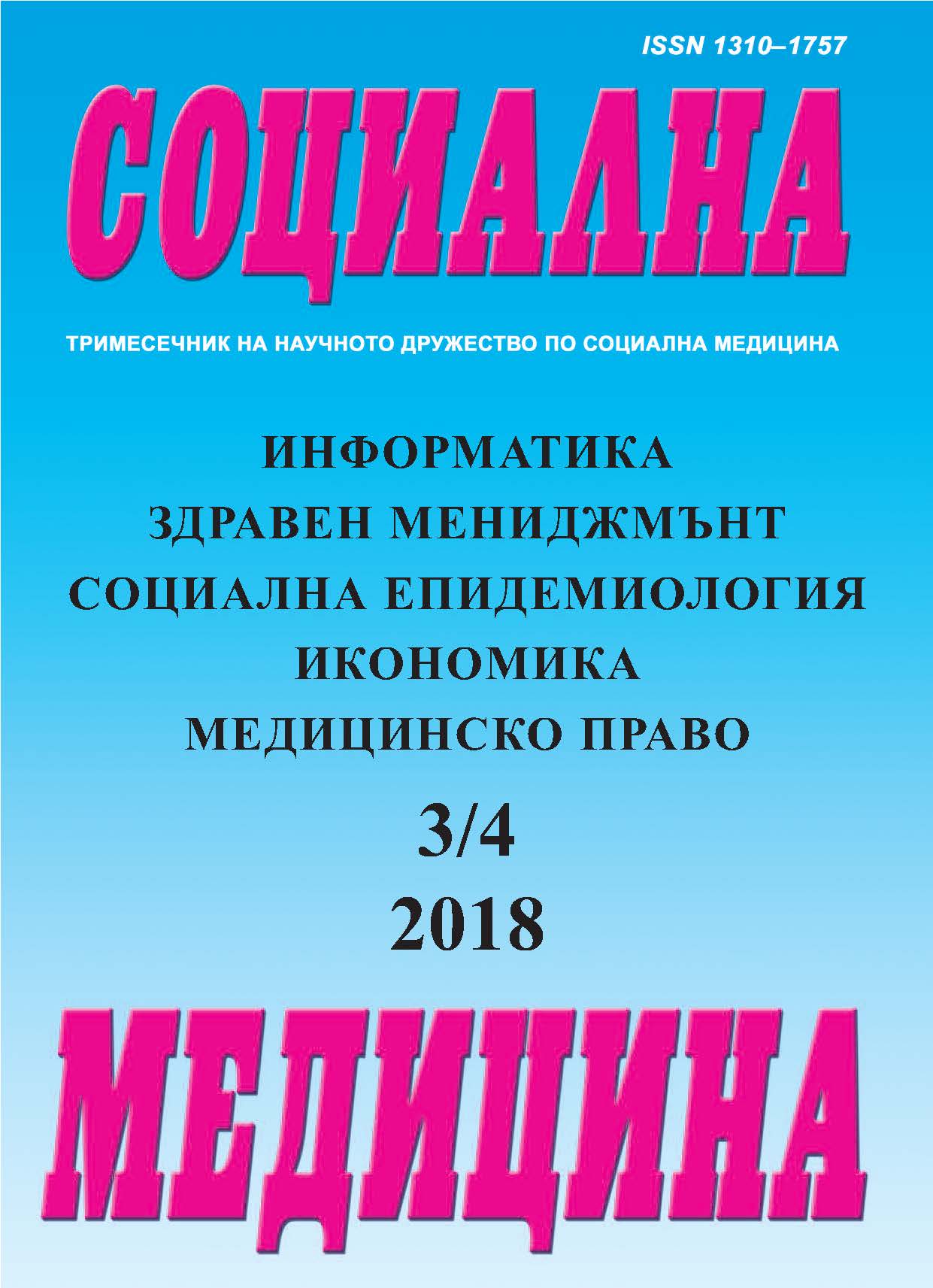
Establishment of an organization of health care in hospital structures to meet current requirements is impossible without the introduction of information systems in the work of the nursing staff. Basic professional nursing activities are focused on patient care and conducting research directed by doctors and drug therapy, but at the same time it is necessary recording the patient information. The aim of this study is to determine the skills of nurses for the implementation of information systems in health care. Conducted a survey of 100 nurses from the University Hospital “Lozenets” in 2017. Results. The data obtained show that the 1/5 of the nursing staff may not work with a computer, and only 12% are those who work with the information system of the hospital. Nearly 90% of respondents indicated that bring patient information in notebooks on hand for these activities spend more than 1 hour of their time.
More...
We live in a highly digitized and hyper-bound world in which information is being created, compiled and transferred extremely easily and fast. Technological capabilities are virtually unlimited and, while providing improvements for different aspects of our lives, they tend to pose important issues, especially when they affect the interests of the people concerned. In the field of public healthcare this is highly sensitive. Along with the rapid digitalization of personal information, one of those important issues refers to the actual ownership of health data, especially with the evermore increasing concern on maintaining data privacy. The aim is to analyze modern trends in patient information ownership from normative and ethical perspective. The results reveal three main trends of patient information ownership – public ownership, private ownership and regulations not based on the right of ownership.
More...